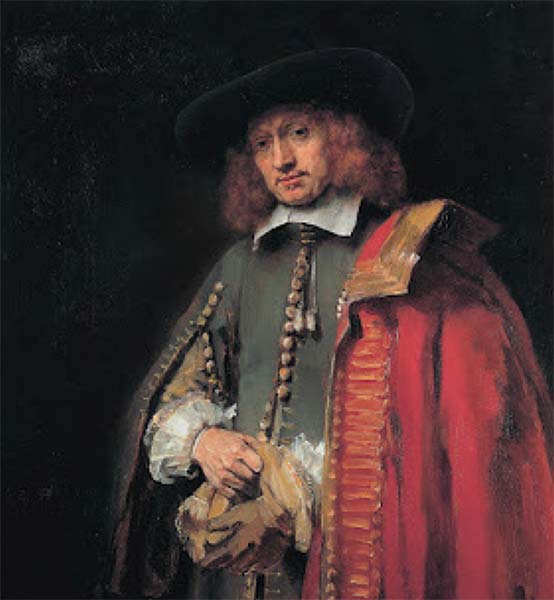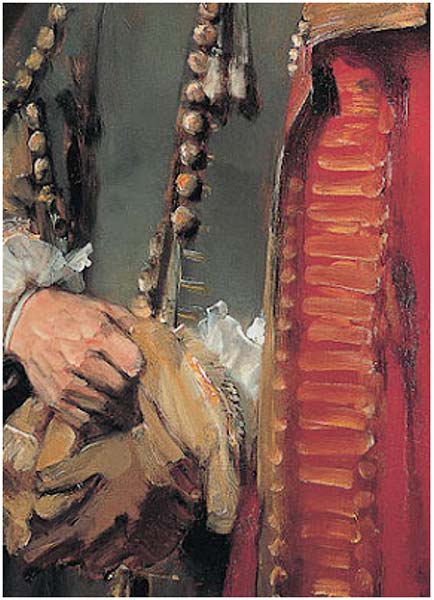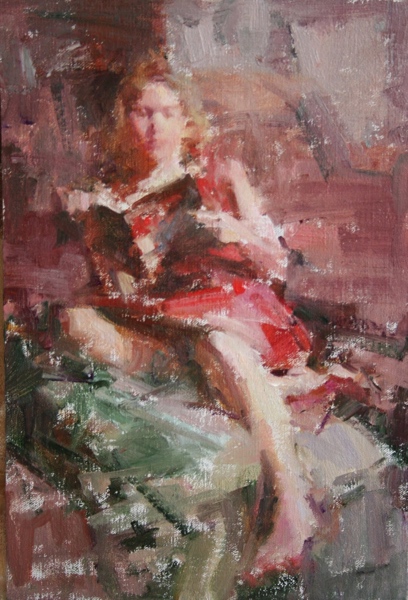Art and Visual Processing
By Carolyn Anderson, WTP Guest Writer
In 1954 ethologist Niko Tinbergen noticed that herring gull chicks instinctively pecked at red spots on their parents’ bills to beg for food. At the time, the dominant idea in animal behavior was that learning was more important than instinct. Tinbergen argued that animals are born with instincts already adapted to their environment. His studies proved that gull chicks not only respond to a long stick with a red spot, but become even more excited when presented with three red stripes on a piece of cardboard. Tinbergen called this the “superbeak,” or supernormal stimulus.
More recently, the neuroscientist V.S. Ramachandran linked Tinbergen’s work to a related principle called peak shift, or the hard-wiring of the brain to focus on parts of objects that matter the most. Peak shift is important in understanding how and why exaggeration and simplification can often convey more information than accurate representation. Ramachandran described peak shift using the ancient Sanskrit word rasa, meaning “capturing the very essence, the very spirit of something, in order to evoke a specific mood or emotion.”
“Since it is impossible in representing an apple to give the image the qualities of tactile appeal, aroma, and taste inherent in the nature object, one must see that the symbol image (no matter how faithful to the object in visual terms) is the weaker experience. Hence the symbolic object must be endowed with special visual characteristics that, in heightening visual impact, make up for qualities it cannot project.”
………………………………………………………………………..-Elements of Design by Donald Anderson
A good example of peak shift is caricature, where certain features, those which are different from the average, are exaggerated to create an image more easily recognizable than a realistic image. Margaret Livingstone, in her book Vision and Art, explains how face neurons (yes, there is a specialized area in the brain for detecting faces) carry information about how a specific face differs from the average face. We notice what is different and we “see” what we notice, so it makes sense that an exaggerated image would be not only recognizable, but perhaps more interesting. As Henri Matisse said, “I do not paint things; I paint the differences between things.”
There are also dedicated visual processing areas for luminance, color, and motion, visual elements that artists have used and manipulated for centuries. For example, the change in the representation of reality that began with the Impressionists and their novel interpretation of light and color continued through the Post-Impressionists and their emphasis on pattern and color. This, in turn, inspired the Fauves (including Matisse) to use an even more extreme variation of color and expressive brushwork. These paintings were a precursor to much of the art of the twentieth century.
Ramachandran and another neuroscientist, Semir Zeki, both part of the very new science of neuroaesthetics, have written about how visual processing can help explain some aspects of art, but they seem to limit their interest and explanations to contemporary art. One could say it is probably easier to recognize the visual elements of line, shape, value, and color without the parameters of representational imagery. However, before neuroaesthetics was even a word, the art historian Ernst Gombrich examined perception and pictorial representation throughout history with his book Art and Illusion, originally published in 1960. His mention of Tinbergen’s gull studies was probably the first recognition of supernormal stimulus in an art book.

Gombrich recognized that symbolism and illusion are integral to all art. From prehistoric to contemporary art, he was able to recognize the accomplishments and visual discoveries through a lens of tradition and transition. In the chapter titled “The Experiment of Caricature,” Gombrich wrote, “We have read Vasari’s comment on the distinction between Titian’s early manner and the loose brushwork of his later masterpieces. Such sublime simplification is only possible on the basis of earlier complexities. Take Rembrandt’s development: he had to learn to build up the image of sparkling gold braid in all its detail before he could find out how much could be omitted for the beholder ready to meet him halfway. In his portrait of his patron Jan Six, one brushstroke is really all that is needed to conjure up the gold braid but how many such effects did he have to explore before he could thus reduce them to this magic simplicity.”

Another one of Tinbergen’s major studies involved the stickleback, a small freshwater fish. The bellies of the male sticklebacks would turn red during mating season and they would attack other males to protect their nesting territory. However, Tinbergen found they would attack anything red. When presented with a series of stickleback models, ranging from a very realistic but colorless model to a very unrealistic blob with a red belly, the fish ignored the realistic model and attacked all the other ones with red bellies. At one point, Tinbergen’s students noticed the fish attacking the side of the tank and they looked in that direction to see a postal van, with red on it, parked outside the window.
Between stories of the stickleback and the herring gulls, I recognized the relationship of supernormal stimuli and the possibilities for walleye fishing. Since walleyes supposedly see the color red, why bother with expensive, overdesigned fishing lures. Anything meant to look “real” would probably trigger an “uncanny valley” response (the process where a near-identical resemblance arouses a sense of unease) from fish that would recognize it as not “real” enough. So I started fishing, successfully I might add, with a single, small, red bead and a hook with a piece of worm. Glass beads seemed to work better than plastic, which might have something to do with variation and reflection, but who the heck knows what it looks like to a fish under twenty feet of water. All those fish needed, however, was something to attract their attention.

Peak shift reminds me of the questionable art advice, “If you can’t paint it big, make it red.”
Originally from the Chicago area, Carolyn Anderson attended school at Illinois State University. She has participated in major national shows for over 30 years, is the recipient of numerous awards, as well as been featured in publications. She is currently a Master Artist with the American Impressionist Society. She has also acquired an excellent reputation for her teaching on perception and visual language in the arts and has conducted workshops for the Fechin School, Scottsdale Artists’ School, Frye Museum, National Cowboy and Western Heritage Museum, and Walt Disney Imagineering. Her work appears in WTP Vol. IX #9.
Originally appeared on Carolyn Anderson’s blog.

